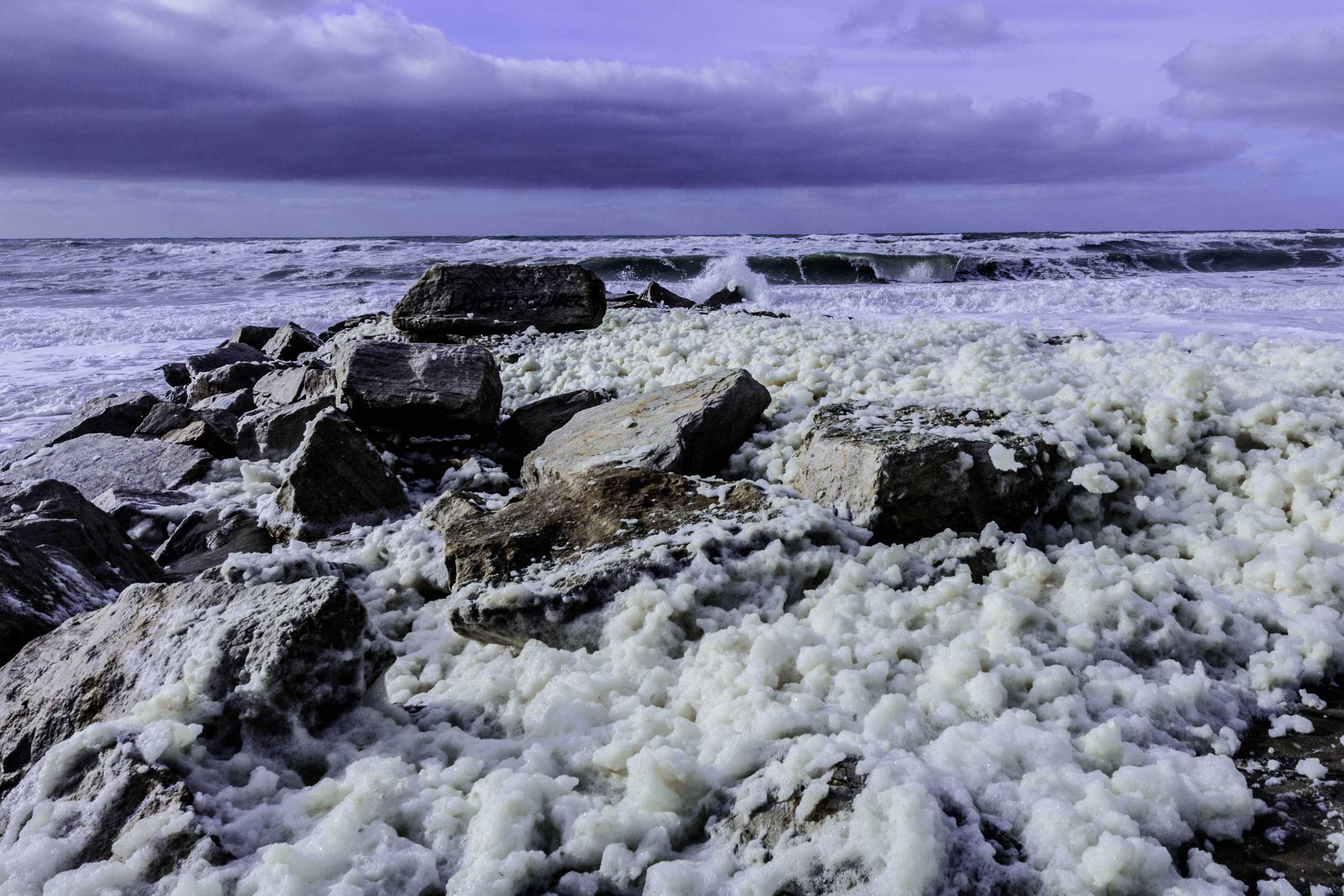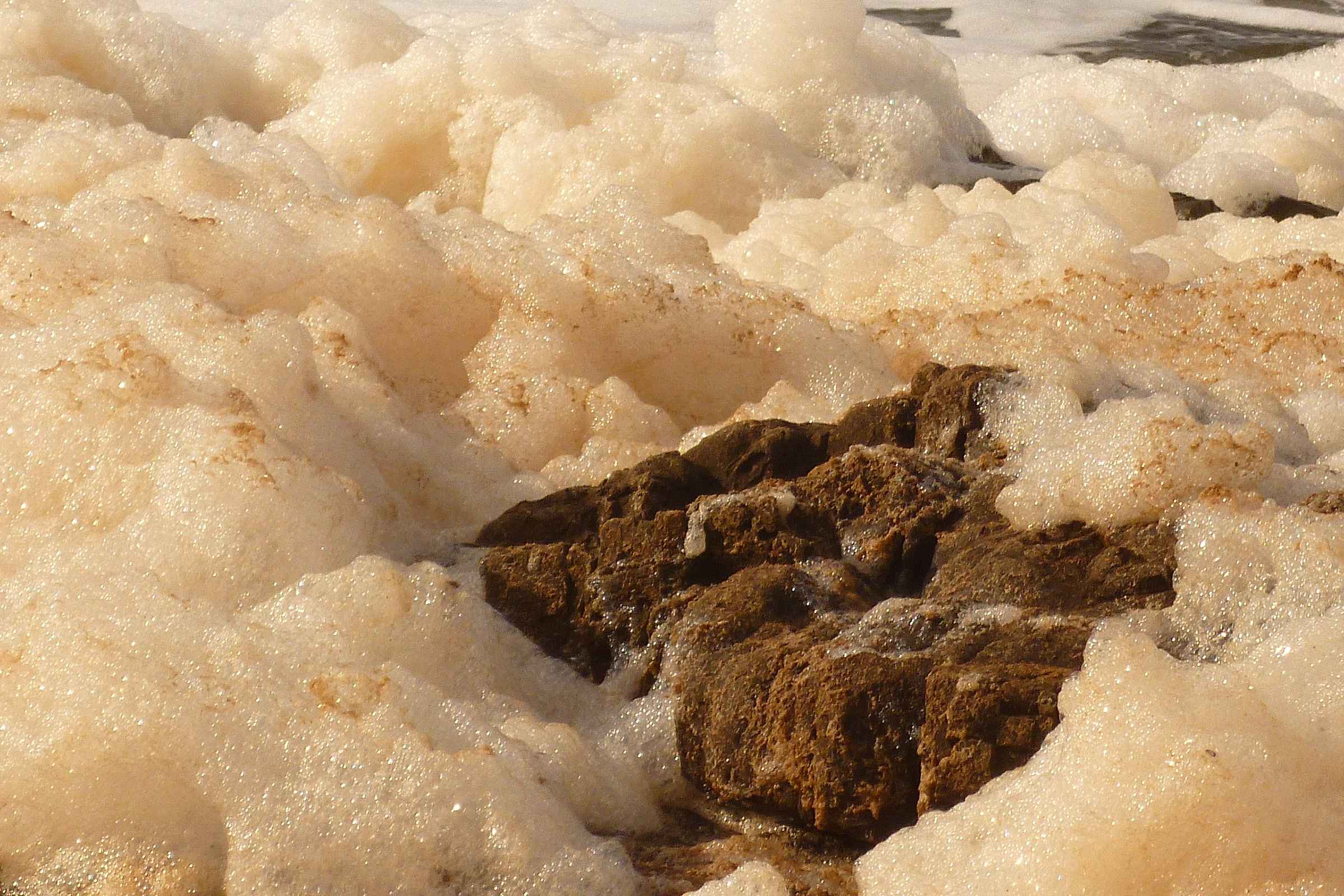Sea foam is formed from the interaction between the breaking of waves and decaying organic material, usually during stormy conditions.
Tiny molecules from the proteins and fats in organic material, such as algae, seaweed, and other marine plant life, act as ‘surfactants’ that interact with the surface tension of water, allowing air and water to mix more easily. These molecules often float on the surface of the water as a thin sticky film that cling to the surface between water and air. Turbulence from waves, current and wind, cause the surfactant molecules to trap small bubbles that make up the foam. In short, sea foam is a mechanical and chemical phenomenon, which results from the combination of swells or storms and high concentrations of organic matter in the water.
The surfactant ingredient can also come from human-made sources, including fertilisers and detergents. Most sea foam is not harmful to humans and is rather an indication of a productive ocean ecosystem. But when large harmful algal blooms decay near shore, there are potential impacts to human health and the environment.

Sea foam on rocks.
Image: Rodrigo Feldman Ruiz

Brown sea foam at the shore.
Image: German11
Further information
- Fact sheet from the UK Environment Agency
- Video of sea foam blanketing a Sunshine Coast seaside town
- Oceanwatch Australia
- Detailed review paper about the origin and ecological importance of sea foam
